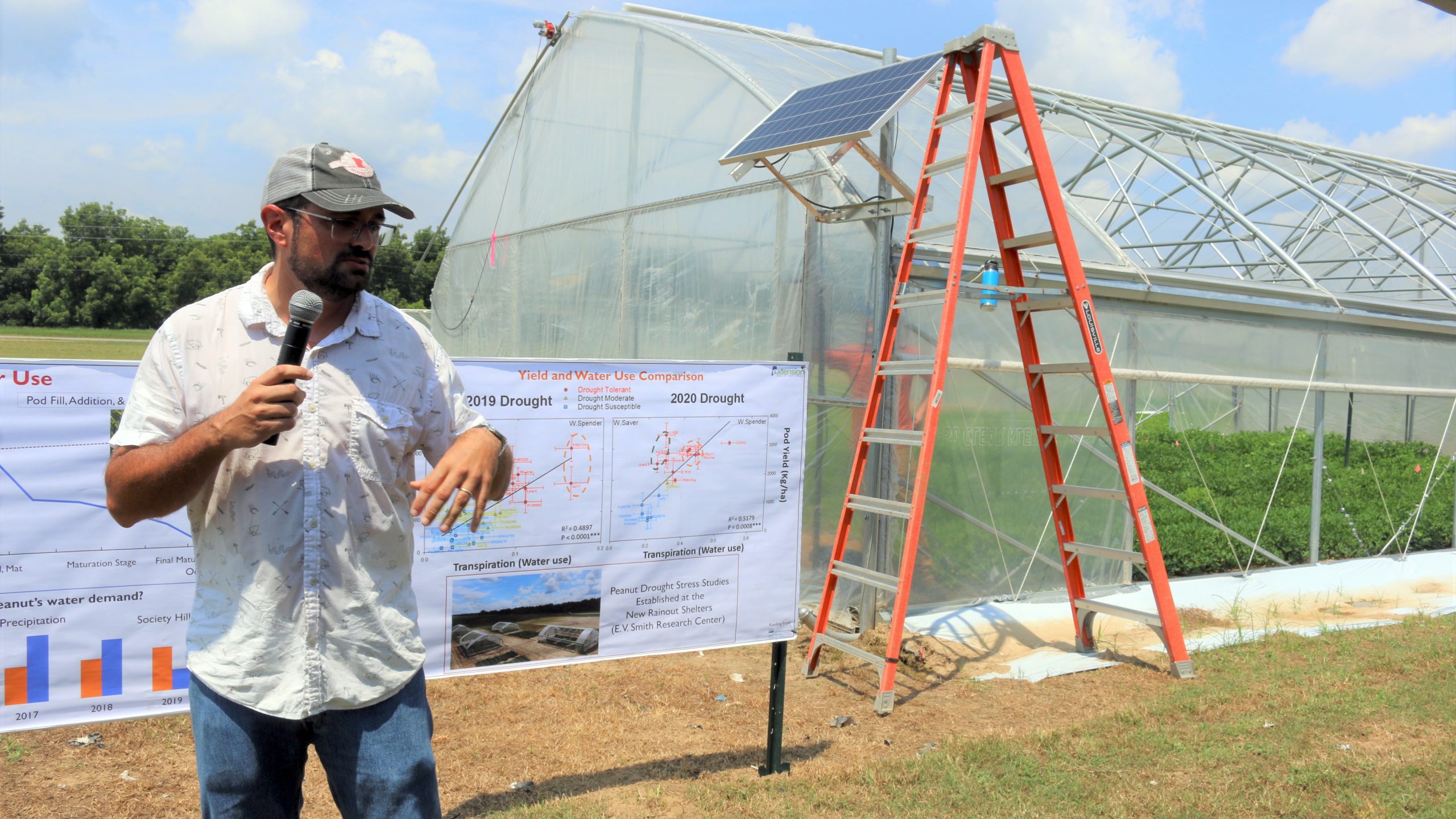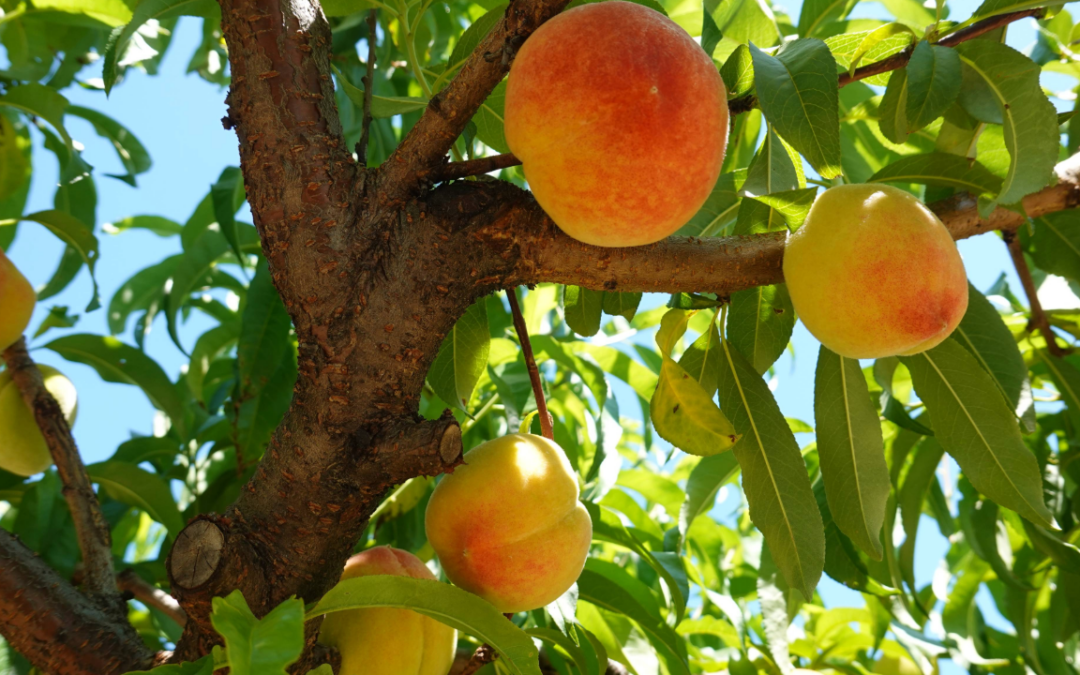Auburn researchers look for drought tolerance
The old adage of not being able to control the weather might be true, but Auburn researchers are looking for ways to at least mitigate the effects of drought on peanut production.
The American Peanut Council has identified drought as the top challenge facing the peanut industry, with only 35% of U.S. growers — even fewer in Alabama — having irrigation capabilities. For this reason, breeding for drought tolerance has become a primary research initiative for the $1.5 billion peanut production industry.
This past spring, the Auburn University Crop Physiology Lab, led by Alvaro Sanz-Saez, in collaboration with the AU Peanut Breeding Program, led by Charles Chen, were awarded a $650,000 USDA-NIFA grant to understand the different mechanisms of peanut drought tolerance. Also working with the project is Bill Batchelor, professor in the Department of Biosystems Engineering. All three researchers work with the Alabama Agricultural Experiment Station (AAES).
Since Sanz-Saez — an assistant professor in the College of Agriculture’s Department of Crop, Soil, and Environmental Sciences — joined Auburn in 2018 and has worked with Chen and the National Peanut Laboratory in Dawson, Georgia, to try and understand mechanisms of drought tolerance in the peanut plant. In previous research, Chen screened 200 cultivars selected for producing high yields under drought, however, there was not an understanding of why these cultivars were drought tolerant.
“When I arrived at Auburn, Dr. Chen had a panel of 36 cultivars that were known for being drought tolerant and sensitive, and those are the ones we screened,” Sanz-Saez said. “Now we have two cultivars that are water savers and two that are water spenders.”
Water savers and water spenders is a concept based on how cultivars use water during the season but is more relevant when plants are under drought, he said. Water savers are cultivars where the stomata closes early. They transpire less and save water in the soil, allowing them to survive more during terminal drought episodes, Sanz-Saez explained.
Terminal drought is a type of drought typical from drier regions like the Mediterranean, Australia and India that is characterized by a moment in the season, usually in summer, when it stops raining until the crop is harvested.
“In this case, the water saver cultivar is very advantageous,” he said. “However, in the Southeast we do not have this type of drought. Here, it is more common to see two to four weeks without drought followed by rain.
“In those situations, water saver cultivars may not be as advantageous because closing the stomata early in the season saves water but also reduces photosynthesis and biomass production, resulting in limited yields.”
In water spender cultivars, the stomata stays open and photosynthesis is high during drought periods. This allows the plant to produce more biomass and yield under drought.
“In other crops, this trait has been related to the capacity of the plant to take up more water from the soil due to a denser or deeper root system,” Sanz-Saez said. “This mechanism was not described in peanuts until we discovered it in our research.”
The Auburn research team is using the newly built rain-out shelter facility site at the AAES E.V. Smith Research Center in Shorter to perform the cultivar experiments. This facility was built in the summer of 2022 with funding from an AAES Equipment Grant and support from peanut, soybean, cotton and wheat and feed commodity groups.
“These plastic greenhouses open and close automatically and cover the crops when it rains,” he said. “When the sky is clear, the shelters remain open, allowing the sun to enter and maintaining the same temperature and irradiance as on the outside. In our experiment, we apply the drought conditions when the peanut is at pod filling stage. That is when it is more sensitive to drought because it is bigger and is producing pods which need a lot of water.”
The rainout facility also is used for teaching and showing students the effects of progressive drought.
With the USDA-NIFA grant, researchers will perform detailed physiological and RNA-sequencing experiments under two rain-out shelter facilities to fully understand the physiological and genetic mechanisms of water saver and water spender drought-tolerant cultivars.
“In addition, we will use a recombinant inbred line population derived from the cross of a water saver with a water spender line to find genomic regions that relate to water saving or spending strategies and that can be used to breed for drought tolerance using marker assisted selection,” Sanz-Saez said.
The data produced in the detailed physiological experiments also will be used to modify a peanut model that can predict the performance of each variety type under current and future environments to determine environments that favor one mechanism over another.
“With this approach, we will facilitate the selection of cultivars with different drought-tolerant strategies that, with the help of crop modeling, can be tailored to yield more under different environments in the Southeast U.S.”
The research also will allow Chen and his breeding program to begin developing commercial peanut cultivars that are water savers and should be more appropriate for environments with less rain, including regions in the Southeast with sandy soils, Sanz-Saez said.
“The modeling part of the project is going to test where these types of cultivars can perform better,” he said. “We are hoping to determine which drought-tolerance mechanism is more suited for different environments. However, we will not be able to recommend specific commercial cultivars. We will focus only on the mechanism of drought tolerance.
“Also, we are testing to see if we can cross a water user and water spender cultivar and get a more drought-tolerant cultivar from the cross.”
One of the four peanut cultivars being tested is AU-NPL 17, the first runner peanut variety released by Chen and Auburn University’s peanut breeding program.
“AU-NPL 17 was identified in our screening as a drought-tolerant water-spender cultivar,” Sanz-Saez said. “Therefore, it is one of the cultivars we are testing. This will help us to understand more about this cultivar, and we will be able to better advise farmers on how to grow it to maximize yield.”





